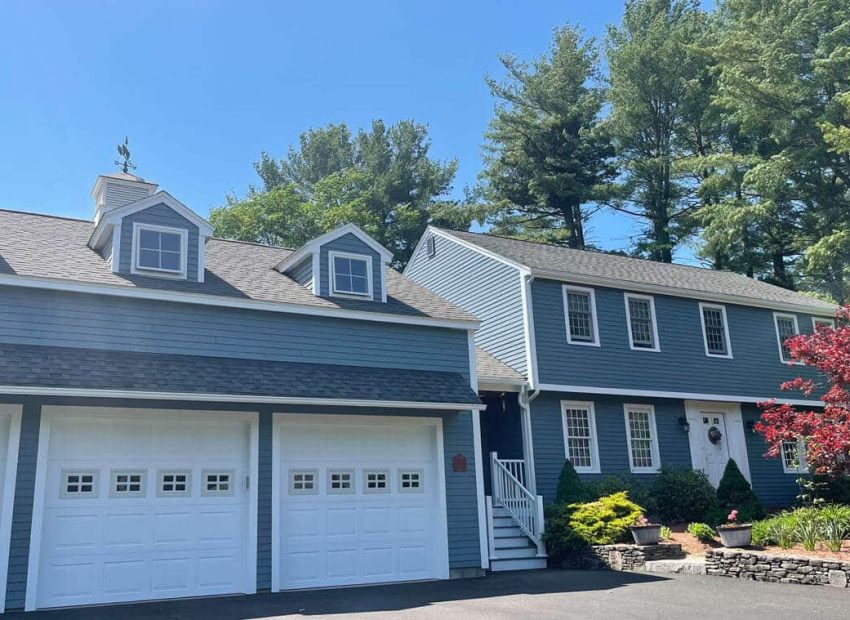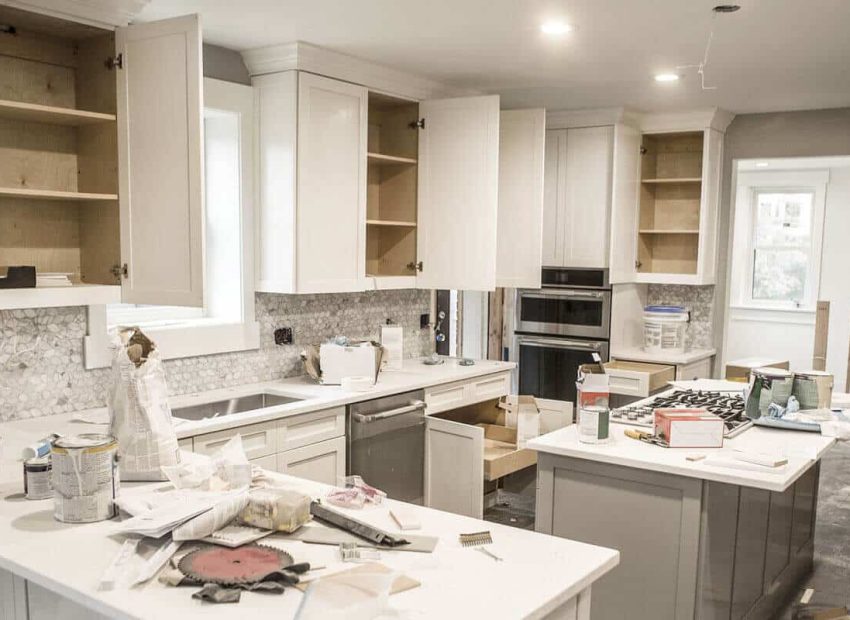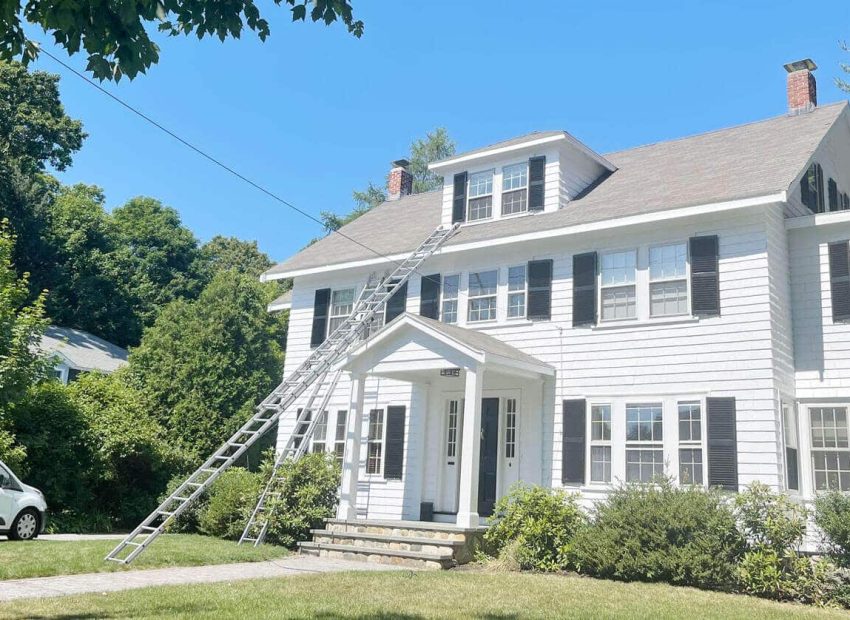Interior Painting Services
Expert Interior Painting Solutions for Massachusetts Homeowners by TINOS Inc.





Expertise and Experiences
Quality Materials and Tools
Free Estimates and Competitive Pricing
Interior House Painting Services in Massachusetts
Transform your Massachusetts home’s atmosphere with TINOS Inc. professional interior house painting services. Our skilled team delivers flawless finishes, vibrant colors, and exceptional care to leave your living spaces revitalized.
Get a free, no-obligation quote today, and let us show you the transformative power of professional painting. Elevate your home with the finest interior painting services in Massachusetts.
Our Interior House Painting Process: Quality You Can Trust
We understand that inviting painters into your home requires trust. That’s why we’ve developed a streamlined process designed to deliver beautiful results with minimal disruption.
Here’s what you can expect:
- Consultation: We’ll discuss your vision, assess your space, and provide a detailed quote.
- Preparation: Our team meticulously covers furniture, protects floors, and repairs any wall imperfections.
- Priming: Where needed, we’ll apply primer to ensure smooth, even paint coverage.
- Painting: Using premium paints, we apply coats with expert technique for a flawless finish.
- Cleanup & Walkthrough: We thoroughly clean our workspace and invite you for a final inspection to ensure your satisfaction.
Ready to transform your space? Contact us for a free consultation!
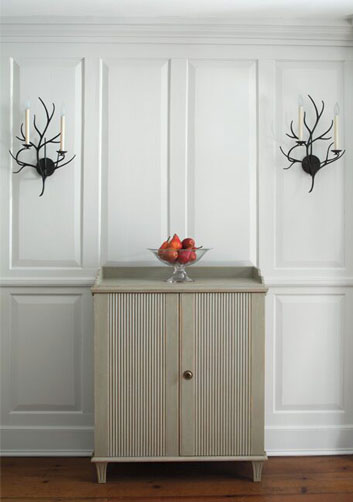
Your #1 Choice for Interior Painting in Massachusetts
Transform your Massachusetts home with the expert touch of TINOS Inc., your trusted interior painting specialists. We deliver flawless finishes, meticulous attention to detail, and a commitment to customer satisfaction that makes us the clear #1 choice for all your interior painting needs.
Schedule a Free Estimate
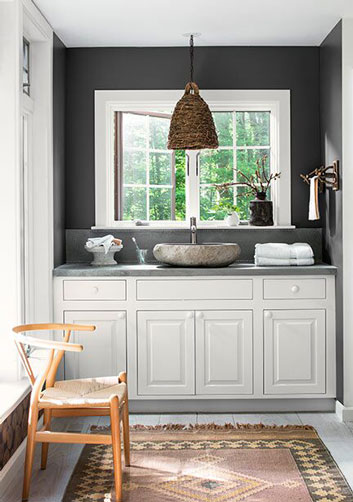
Our Interior Painting Services Include:
We tackle all your interior painting needs, from refreshing entire rooms to revitalizing accents:
- Walls: Create a vibrant new look or a serene atmosphere with our expert wall painting. We cover old marks and deliver flawless color to transform any room.
- Ceilings: No more tired ceilings! Our team has the skills and equipment to paint those high areas, brightening your space with a fresh finish.
- Trim & Molding: Revitalize the details that make a room stand out. We carefully paint all your trim, molding, door frames, and window frames for a polished look.
- Cabinets & Furniture: Reimagine your kitchen, bathroom, or favorite furniture pieces with our cabinet and furniture painting services. We’ll give them a whole new life!
- Accent Walls: Add a touch of drama or a splash of personality! We’ll help you choose the perfect color or pattern to create a stunning accent wall.
Benefits of Interior Painting
Aesthetic Transformation
- New Look & Feel: Fresh paint completely revamps a room, changing its ambiance and style.
- Color Psychology: Choose colors that evoke the desired mood – calming, energizing, sophisticated, etc.
- Covering Imperfections: Hides stains, scuffs, outdated colors, and minor surface imperfections.
- Accent Walls: Creates a striking focal point with a bold color or pattern.
Practical Improvements
- Enhanced Cleanliness: New paint provides a smooth, easily cleaned surface.
- Protection: Quality paint acts as a barrier against everyday wear and tear, dirt, and moisture.
- Increased Home Value: A fresh coat of paint is one of the most cost-effective ways to boost your home’s appeal and potential resale value.
Health & Wellness
- Improved Air Quality: Newer paints often have low or no VOCs (Volatile Organic Compounds), reducing harmful emissions.
- Mold & Mildew Prevention: Fresh, protective paint helps prevent moisture build-up that can lead to mold and mildew growth.
- Mental Boost: A beautifully painted space can enhance your mood and sense of well-being.
Additional Considerations:
- Professional vs. DIY: A professional painter ensures quality results, proper prep, and saves you time.
- Choosing the Right Paint: Consider factors like room type, durability needs, sheen, and eco-friendliness.
Explore the Diverse Interior Painting Solutions at TINOS Inc.
Our interior painting services will help to transform the look and feel of a room, creating a fresh, new, and updated space. Our professional painters have the tools, experience, and expertise to ensure that the job is done correctly and to the client's satisfaction.
⇒ Bathrooms Interior Painting
⇒ Kitchens Interior Painting
⇒ Dining rooms Interior Painting
⇒ Living rooms Interior Painting
⇒ Hallways Interior Painting
⇒ Bedrooms Interior Painting
⇒ Garages Interior Painting
⇒ Garage floors Painting
⇒ Drywall Interior Painting
⇒ Basements Interior Painting
Get in Touch
Book Your Estimate Today!
TINOS Inc.: Professional painters, breathtaking results. Book your free estimate and unlock the joy of a perfectly painted home!
Schedule a Free Estimate
Common Types of Interior Paint Sheen: Your Guide to the Perfect Finish
Paint sheen describes how reflective the finish is – from no shine to very shiny. Choosing the right sheen is key for both the look and durability of your paint job. Here’s an overview of the most common options:
- Flat: No shine, hides imperfections well. Ideal for low-traffic areas like bedrooms and living rooms.
- Matte: Subtle shine, smooth finish, easy to touch up. Good choice for walls, especially those with some flaws.
- Eggshell: Slight sheen, more durable than flat/matte. Popular for high-traffic areas due to its easy cleaning.
- Satin: Noticeable sheen, adds a touch of elegance, and stands up to wear. Works well for family rooms, hallways, and trim.
- Semi-gloss: Higher shine, very durable. Great for kitchens, bathrooms, doors, and trim.
- High-gloss: Maximum shine, ultra-tough. Best for areas needing frequent cleaning and those you want to highlight.
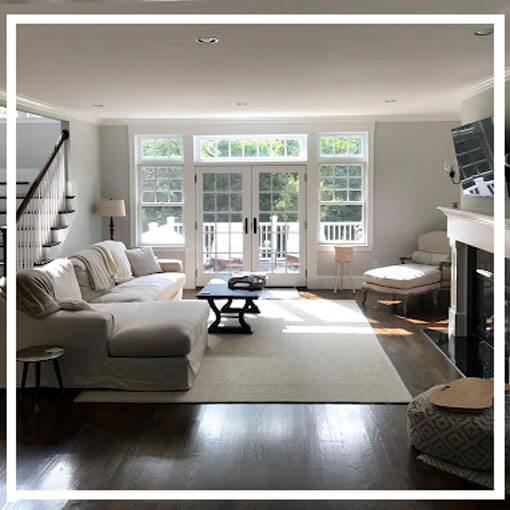
Transform Your Living Room: Professional Interior Painting
Let TINOS Inc. transform this central space with beautiful color, expert application, and a commitment to your complete satisfaction. From cozy retreats to stylish gathering spots, we’ll help you realize your perfect living room.
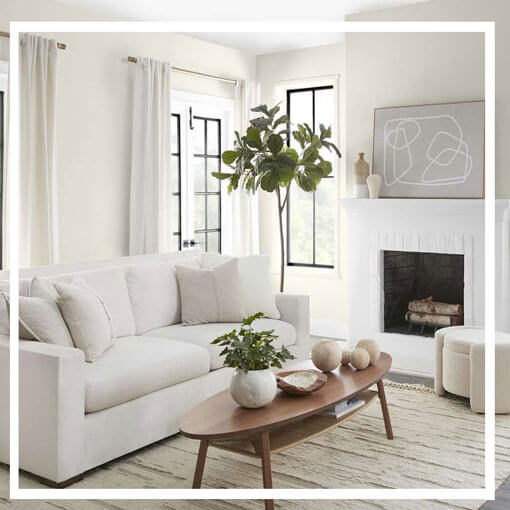
Our Massachusetts Living Room Painting Services
- Residential Interior Painting: The heart of your service! Includes painting individual rooms or full homes, covering walls, ceilings and potentially trim.
- Kitchen & Bathroom Painting: Specializes in these moisture-prone areas, including mold-resistant paints and cabinet refinishing options.
- Detail-Focused Trim & Cabinetry Painting: Includes doors, window frames, moldings, built-ins, fireplace surrounds, etc.
Get your free estimate today and start your transformation journey! Contact TINOS Inc.

Professional Service

Superior Quality

Clean Work Areas

Attention to Detail

On Time, On Budget
Why Choose TINOS Inc. for Your MA Interior Painting Contractors
For decades, TINOS Inc. has delivered exceptional interior painting throughout Massachusetts. Our skilled team combines meticulous craftsmanship with a dedication to customer satisfaction, ensuring stunning results in every home.
What We Offer:
- Full Interior Painting: Refresh your entire home or revitalize individual rooms.
- Eye-Catching Accent Walls: Add personality with a statement wall.
- Cabinetry & Trim Revival: Transform built-ins and details with meticulous painting.
- Color Consultations: Discover the perfect shades for your space.
- We Listen: Tell us your vision, and we’ll make it a reality.
- Stress-Free Process: Clear communication and a clean workspace make it easy.
- Your Satisfaction is Our Goal: We’re not finished until you’re thrilled with the results.
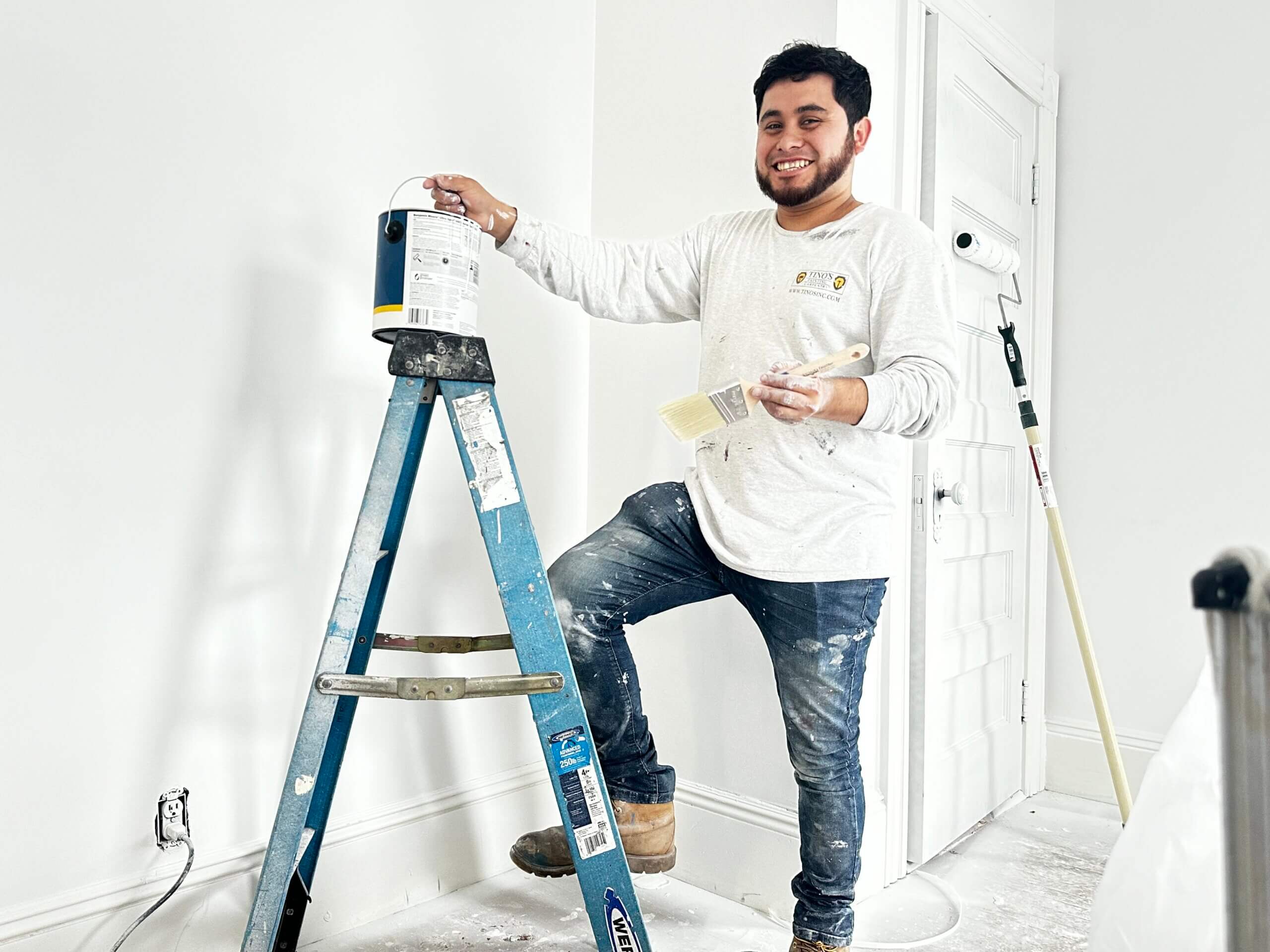
TINOS Inc. Indoor Painting Services
for Homes and Businesses
Interior House Painting Services in Massachusetts
TINOS Inc. has proudly served Massachusetts homeowners for over 20 years. Our skilled team combines a passion for craftsmanship with a commitment to exceptional results in every project.
Our Experience is Your Advantage
- Proven Techniques: We know the best methods for prepping and painting various surfaces, ensuring long-lasting beauty.
- Problem-Solving: From outdated finishes to minor repairs, we’ve seen it all and can restore your home’s best look.
- Efficiency: Our experience streamlines the process, minimizing disruption to your home life.
- Trust: We’ve built our reputation on beautiful results and satisfied clients across Massachusetts.
Ready to love your home even more? Get your free estimate today! Contact TINOS Inc. and let’s start your transformation.
Commercial interior painting Services Massachusetts
First impressions matter. Our expert commercial interior painting services help your Massachusetts business look its best, enhancing the workspace for both clients and employees. Meticulous craftsmanship, quality materials, and flexible scheduling ensure a beautiful transformation and minimal disruption.
Services for Your MA Business:
- Office & Workspace Painting: Refresh or completely redefine office spaces, conference rooms, and common areas for a more productive environment.
- Retail & Storefront Painting: Create an inviting shopping experience with meticulously painted walls, displays, and architectural details.
- Hospitality Painting (Hotels/Restaurants): Ensure a welcoming atmosphere with beautifully painted lobbies, dining areas, and guest rooms.
TINOS Inc. | Your Massachusetts Commercial Painting Partner
We’ve proudly served businesses across Massachusetts . From small shops to large corporate offices, we have the experience to handle your project seamlessly.
Specialty Interior Painting Services Massachusetts
Go beyond basic painting! TINOS Inc. offers specialized interior painting techniques and services to transform your Massachusetts home into a one-of-a-kind masterpiece.
Accent Walls & Feature Walls: Create a stunning focal point with bold colors, textured finishes, or custom patterns.
Decorative Painting & Faux Finishes: Mimic the look of marble, wood, or other luxurious materials with expert faux finishing techniques. Add elegance and depth.
Cabinet & Furniture Refinishing: Revitalize kitchen cabinets, bathroom vanities, built-ins, and beloved furniture with professional refinishing.
Wallpaper Removal & Installation: Handle the tricky removal of old wallpaper or expertly install new wallpaper to add pattern and personality.
Murals & Custom Artwork: Turn a wall into a work of art! Our skilled artists can bring your vision to life with custom murals and designs.
Ready to explore the possibilities? Contact TINOS Inc. for a consultation and discover how specialty painting can elevate your Massachusetts home.
Interior Painting FAQ
Hire an Interior Painter Near Me | TINOS Inc.
When you are ready for hiring a professional interior painting near me services in your location Massachusetts, give our team a call at TINOS Inc. today. Our team of experienced and dedicated painting contractors is available in the Massachusetts area and ready to help you achieve your ideal look for your home.
Cost depends on square footage, room complexity, paint quality, and any additional prep work. It's best to get estimates from a few companies.
Painting over wallpaper is not recommended, as it can cause the wallpaper to bubble and peel. It is best to remove the wallpaper before painting.
If you have experience with painting and the necessary tools and equipment, you may be able to successfully paint your interior walls yourself. However, if you lack experience or are undertaking a large or complex painting project, it is recommended to hire a professional painting contractor to ensure a high-quality and long-lasting result. TINOS Inc. will be best choice for you!
TINOS Painting & Carpentry is a local, family-owned-and-operated painting and carpentry company located on the historic North Shore of Boston in Lynn, MA. We are highly trained and experienced professionals with more than 20 years of experience in doing high-quality interior and exterior work for both residential and commercial properties. Moreover, TINOS Painting & Carpentry is also well-known throughout our area as a leading painting contractor and receives a majority of our jobs through word-of-mouth referrals from our clients, their family, and their friends.
The time it takes to paint a room depends on the size of the room, the number of coats required, and the complexity of the job. Generally, a small to medium-sized room can be painted in one to two days, while larger rooms may take longer.
Consider the room's use, furniture, lighting, and the desired mood. Your contractor may offer color consultations or you can use online tools for inspiration.
Selecting an interior paint color can be overwhelming, but here are some tips to help you make a decision:
- Consider the purpose of the room: The color you choose should complement the purpose of the room. For example, a calming blue or green may be suitable for a bedroom, while a bright yellow or red may work well in a kitchen or dining room.
- Think about the existing decor: Look at the existing furniture, curtains, rugs, and artwork in the room. Choose a color that will complement and enhance the existing decor.
- Get inspiration: Look for inspiration in magazines, Pinterest, or design blogs to get an idea of what color combinations work well together.
- Test the colors: Before committing to a color, test it out in the room by painting a small section of the wall or using a sample board. This will give you an idea of how the color will look in different lighting and against the existing decor.
- Consider the mood: Colors can affect the mood of a room. Warm colors like red, orange, and yellow can create a cozy and welcoming atmosphere, while cool colors like blue and green can promote calm and relaxation.
Remember that selecting a paint color is a personal choice and there is no right or wrong color. Choose a color that makes you happy and reflects your personal style.
- Preparation: The first step is to prepare the room for painting. This includes covering the floors and furniture with drop cloths, removing switch plates and outlet covers, and filling any holes or cracks in the walls.
- Cleaning: The walls must be cleaned thoroughly to ensure that the paint adheres properly. A mixture of water and mild detergent is used to clean the walls.
- Sanding and Priming: Once the walls are clean and dry, they are sanded to smooth out any imperfections. Then, a coat of primer is applied to create a smooth surface and improve paint adhesion.
- Painting: After the primer has dried, the painting can begin. Professional painters use high-quality paint and the appropriate tools for the job. They start by cutting in around the edges of the room with a brush, and then roll the paint onto the walls in a "W" or "V" pattern.
- Drying: Once the paint has been applied, it needs time to dry. Professional painters will ensure that the room is well-ventilated to help the paint dry faster.
- Inspection: After the paint has dried, the painters will inspect their work for any missed spots or imperfections.
- Clean-up: Once the job is complete, the painters will remove their equipment, remove the drop cloths, and clean up any debris or mess created during the job.
Keep in mind that the painting process may vary slightly depending on the specific job requirements and the painting contractor's techniques.
Prepping a room for interior painting is an important step to ensure that the paint adheres properly and the finished job looks clean and professional. Here are the steps you can follow to prep a room for interior painting:
- Clear the room: Remove all furniture, decorations, and other items from the room. This will give you more space to work and reduce the risk of paint splatters on your belongings.
- Protect the floors: Cover the floors with drop cloths or plastic sheeting to protect them from paint splatters and spills.
- Protect the trim: Apply painter's tape to protect the trim around doors, windows, and baseboards. This will ensure that the paint lines are clean and crisp.
- Patch any holes or cracks: Fill any holes or cracks in the walls with spackle or putty. Allow it to dry, and then sand it down until it is smooth.
- Clean the walls: Dust and wash the walls to remove any dirt, grime, or grease that may prevent the paint from adhering properly.
- Sand the walls: Sand the walls lightly to create a rough surface that the paint can stick to. This will also help to smooth out any bumps or rough patches.
- Prime the walls: If you are painting over a darker color or a wall with stains or damage, apply a coat of primer before painting. This will help the paint adhere and improve the overall appearance of the finished job.
By following these steps, you can ensure that your room is properly prepped and ready for interior painting.
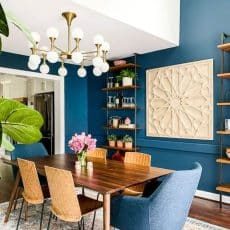
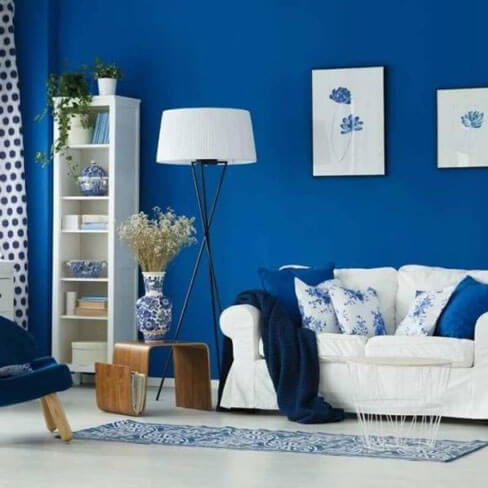
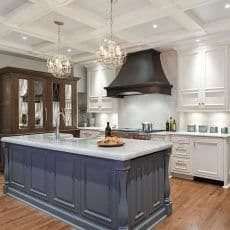
Latest PROJECTS
Interior Painting Project
TINOS Inc. interior painting service is offer applying paint to the interior surfaces of a building, such as walls, ceilings, and trim. Our professional painter can ensure that the job is done efficiently and safely, with attention to detail and high-quality materials.

